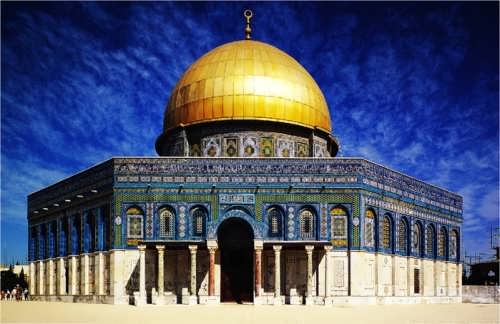
The number of chapels and shrines dedicated to various deities by the community of workmen
at Deir e-Medina indicates their devotion, tolerance and need for public religious expression.
Any individual chapel would have provided a local residence for the god or goddess to whom it
was dedicated and an area for offerings to that deity. The chapels symbolise the community’s
recognition of both local and national gods.
On the narrow path leading northeast from the Valley of the Queens to the village of Deir el-Medina,
rising from the desert is a low hill, into the slope of which a few reliefs and inscriptions of Ramesside
kings have been cut. To the right of them there is a rock-cut sanctuary of deities, who guarded the
Theban necropolis. One chapel was dedicated in the New Kingdom to the goddess Meretseger, another
one to Ptah. The sanctuary was probably begun during the Ramesside period.Stone walls surround an irregular
courtyard of the large cave-like
shelter at the southern end.
During Coptic period it was used by
hermits. Nowadays it is know by
locals as “the snake room”.Several large stelea from the time of
the reign of Ramesses III (1182-1151
BC) were cut into the bedrock at the
northern end of the shrine. They are
decorated with scenes of individuals
before various deities.They are damaged and worn but
the inscriptions are legible and
cartouches with the king’s name
are present.Detail of a hieroglyphic inscription
– nsw-bity nb tawy –
“the dual king of the two lands”.Pharaoh Setnakhte (1185-1182 BC) with
the goddesses Mut of Asher and Hathor
receives the heb-sed festival symbol from
Amun-Ra and Ptah.Ptah’s original cultic association
seems to have been with
craftsmen. The High Priest of
Ptah held the title wr kheper hmw
– “supreme leader of craftsmen”.Traces of original
pigment are left
on the walls of
the shrine.This badly eroded wall show remains of a
relief of the goddess Meretseger with the
head of a cobra. She was the goddess
associated with the pyramidal peak of
al-Qurn and presided over the whole
Theban necropolis. Her name means “she
who loves silence”. She was primarily
worshipped by the workmen of the royal
necropolis. The site was first excavated by Ernesto Schiaparelli in 1906. Fragments found there date to the 19th
dynasty. As the rock that once formed the roof of the sanctuary had collapsed in several places and
the whole sanctuary was full of stones and sand, the French Institute conducted the clearing of the site
in 1926. A special permission from the Egyptian antiquities service was needed, because the rock-cut
shrine lied already outside the borders of the French concession.
“Only a small number of workmen sufficed for the excavation; most problematic were the large boulders
which had to be either crushed by stones and carried away piece by piece, or pulled out of the
sanctuary on ropes. After turning over of one boulder, which had once formed a wall of the sanctuary, a
stela was discovered engraved with scenes and inscriptions. We decided that we could not leave the
stela in its place. As the stone was too heavy to be transported into our house, the scene with
inscription was to be cut off. But before we received the necessary tools – we were not equipped for
work of this kind – the entire stone was stolen at night and no trace of it or of the thieves was ever
found. Fortunately, we had taken photographs after the discovery, as well as a hand copy and a proof
leaf, so at least for study the stone is not completely lost. The photographs were sent to all
antiquarians with a warning not to buy the inscription, because is stolen but I think that after some
years the thieves will nonetheless succeed to sell it and the stone will appear in a European or American
museum.”
The excerpts came from Jaroslav Černý’s manuscript of his lecture called “Ten Months on Excavations in
Egypt”, which was held in Cairo on April 4th 1932.“Ptah of the Place of Beauty”,
term often mentioned in ancient
sources, is Ptah from one of the
sanctuaries at the rock cut shrine
near the Valley of the Queens
(“the Place of Beauty”).We found this ancient graffiti
about 10 meters down the path
towards the Valley of the Queens.The area opposite the Ptah’s
shrine where traces of small stone
huts of Ramesside date have been
found.
